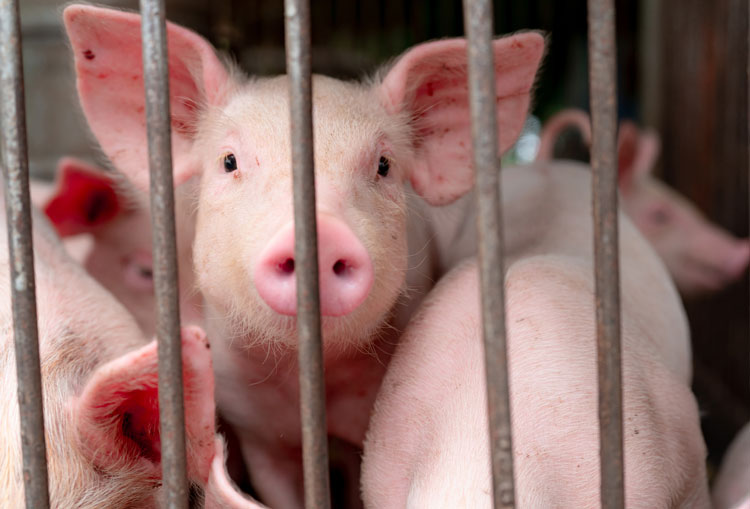
By now you may have heard about the epidemic of African Swine Fever (ASF) wreaking havoc on pig populations all around eastern Asia. The fatal virus is responsible for the loss, from either death or culling, of over 5 million hogs and counting in just the past year.
USDA Animal and Plant Health Inspection Service (APHIS) reports that the disease has affected at least 23 countries. The brunt of the loss has hit pork-hungry Asia, especially places like China and Vietnam. China, a country of 1.4 billion people and a monthly consumption of 4.7 million tons of pig products, has seen pork prices nearly double in a year as it lost over half its swine herd. Thousands of farms that lost herd inventories have no way to recoup their losses.
Thankfully, the African Swine Fever poses no threat to human health or food safety. And thankfully, it has not spread to our hog population in the U.S. But experiencing a production disaster of this scale, even from the sidelines, provides valuable reminders to everyone involved in animal agriculture, including dairy.
1. Disease is destructive.
When we do such an effective job of controlling disease that we rarely, if ever, see certain infections, it may be easy to forget about or downplay the influence that organisms can have on our animals and our herds. Then the industry experiences some breakdown, followed by a food recall or disease outbreak — such as ASF or the 2001 hoof and mouth eruption in the United Kingdom that killed over 6 million animals. These situations are not pleasant for anyone, period. When the worst occurs, it should provide a wake-up call to revisit preventative strategies that may have slipped through the cracks on our operations.
2. Our food system is not invincible.
The fluctuating food prices driven by animal shortages may be more surprising for consumers than farmers since producers are already familiar with changing markets. A pork shortage of the magnitude driven by ASF is fairly rare and not life-threatening, either. It does provide powerful perspective, though, on the impact our food production has on the world. As farmers, we have a responsibility to maintain a reliable food source as much as possible.
3. Biosecurity compliance cannot be optional.
ASF is highly contagious and there is no vaccine or treatment, which is why millions of infected pigs are being buried and farms completely sanitized. Many diseases prevalent in dairy cattle are easily transferrable as well, and our best bet to protect against ASF-level damage is to implement and follow effective biosecurity plans. Make sure all new animals brought onto the farm are quarantined for 30 days before sharing pens, feeding areas, and waterers with the existing herd. Monitor all animals for signs of infection and treat them as soon as possible. Make sure that any visitors to the farm are recorded. It can be the difference between life and death to ensure that these policies not only exist on your farm but are followed by every employee.
4. We’re all in it together.
The good news is that American farmers have resources to prevent an animal health crisis even beyond their own operation. APHIS has worked to prevent the spread of ASF to the U.S., and its education and regulation efforts would help limit dairy disease importation, too. Local extension offices can be a great source of information, as well, if you’re concerned about symptoms occurring on your farm. Reporting outbreaks can help limit the damage before it becomes catastrophic.
Disease problems can strike anywhere at any time to anyone. With vaccination and treatment plans, biosecurity measures, and good cow comfort, dairy farmers continually work to make sure their animals remain in good health. An incident such as ASF is a grisly but helpful reminder of why it’s so important to stay on top of those health protocols.








